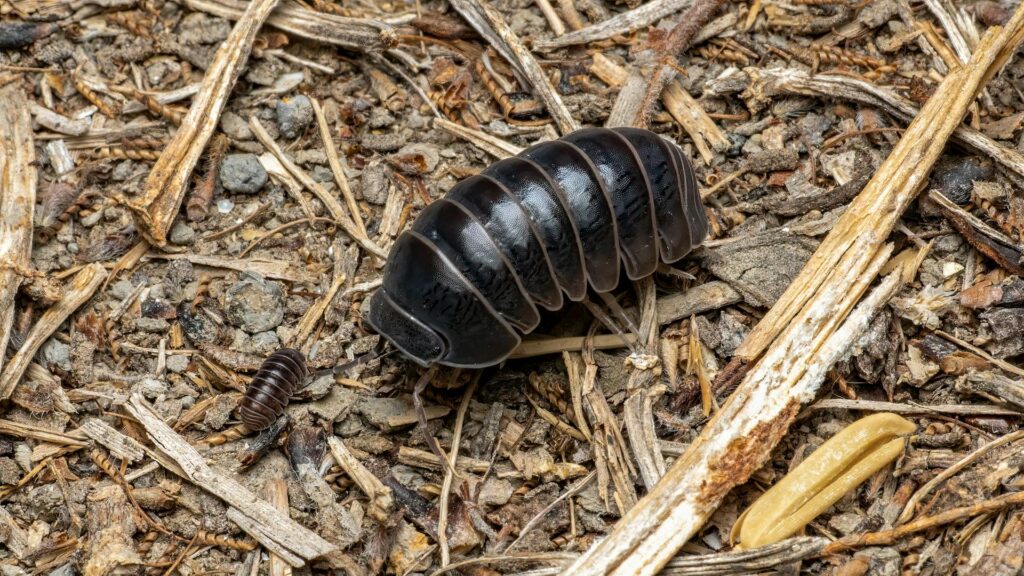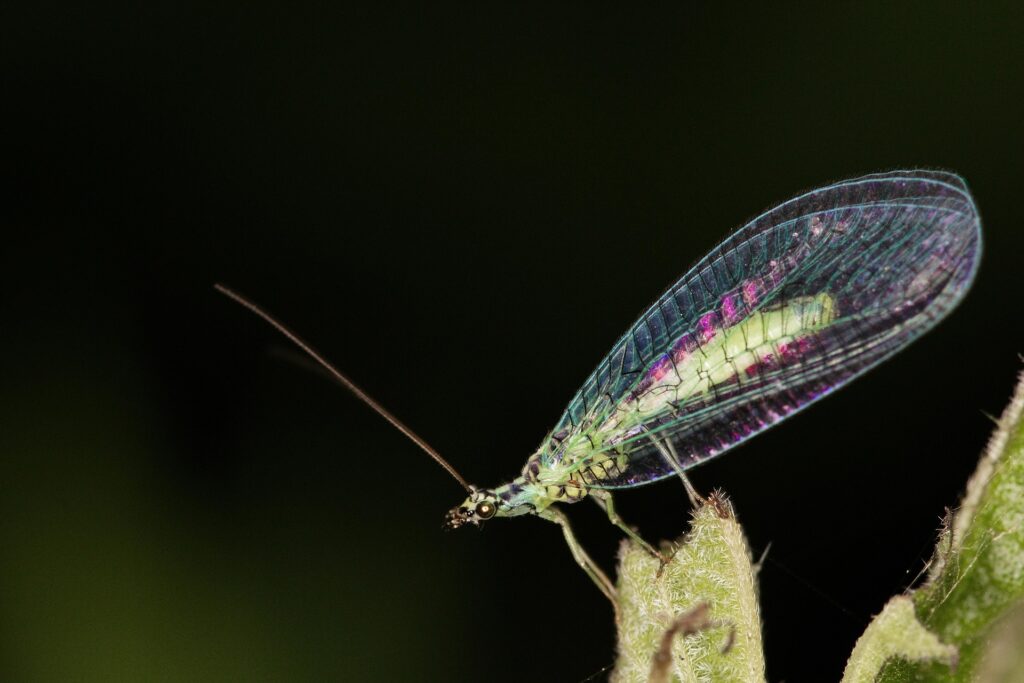Hoverflies are among the most beneficial and fascinating insects found in gardens and outdoor spaces, yet they’re frequently misidentified as bees or wasps due to their convincing mimicry patterns. These harmless flies provide essential pollination services and natural pest control through their aphid-eating larvae, making them valuable allies for gardeners and agriculturalists.
Understanding hoverfly identification, behavior, and ecological roles helps distinguish them from the stinging insects they mimic and appreciate their contributions to healthy garden ecosystems. Their presence typically indicates thriving plant communities with adequate flower resources and balanced insect populations supporting diverse beneficial species.
What are hoverflies?
Hoverflies, also called flower flies or syrphid flies, belong to the Syrphidae family and represent one of the most beneficial insect groups found in gardens, agricultural areas, and natural ecosystems worldwide. These true flies are characterized by their remarkable ability to hover motionless in mid-air and execute rapid, darting flight maneuvers that distinguish them from other flying insects. Adult hoverflies are important pollinators that feed primarily on nectar and pollen from flowering plants.
There are over 6,000 hoverfly species worldwide, with hundreds of species found throughout North America in diverse habitats ranging from gardens and meadows to forests and wetlands. Many species display bee or wasp mimicry patterns as a defensive strategy called Batesian mimicry, where harmless organisms evolve to resemble dangerous species to deter predators.
Hoverflies are completely harmless to humans as they lack stingers and cannot bite effectively. They’re often seen hovering around flowers during warm, sunny days when they’re actively foraging for nectar and pollen. Their larvae provide additional benefits as many species are voracious predators of aphids and other soft-bodied plant pests.
These beneficial insects play crucial roles in both pollination and biological pest control, making them among the most ecologically valuable insects encountered around homes and gardens.
What do hoverflies look like?
Hoverflies display remarkable diversity in appearance, but most species share certain characteristic features that help distinguish them from the bees and wasps they often mimic. They typically measure 1/4 to 3/4 inch in length with compact, robust bodies and large, prominent compound eyes that often occupy much of their head area. Many species display yellow and black banding patterns similar to bees or wasps, though some have metallic coloration or other distinctive markings.
Key identifying features include short antennae, a single pair of wings (unlike four-winged bees and wasps), and the absence of a narrow wasp waist. Hoverflies have large eyes that may meet at the top of their heads in males or remain separated in females. Their flight pattern is distinctive, with the ability to hover perfectly still in one spot and then dart rapidly in any direction.
Some hoverfly species closely resemble specific bee or wasp species, including bumble bee mimics with fuzzy bodies and honeybee look-alikes with appropriate coloration. Others display more unique appearances with metallic green or blue coloration, spotted patterns, or even wasp-waisted shapes despite being harmless flies.
Their wings typically appear clear or slightly tinted, and many species have distinctive wing venation patterns visible upon close inspection. The overall impression is of a bee-like or wasp-like insect with unusually large eyes and characteristic hovering flight behavior.
Lifecycle of a hoverfly
Hoverflies undergo complete metamorphosis with four distinct life stages: egg, larva, pupa, and adult. Female hoverflies lay eggs individually or in small clusters near aphid colonies or other suitable food sources for their larvae, with some species laying hundreds of eggs during their adult lifespan. Egg placement is strategic, ensuring larvae have immediate access to food upon hatching.
Larvae vary dramatically in appearance and habits depending on species. Aphid-eating larvae are small, slug-like creatures measuring up to 1/2 inch long with cream or green coloration that provides camouflage among plant tissues. These beneficial larvae consume hundreds of aphids during their 1-2 week development period. Other species have aquatic larvae living in polluted water, or larvae that develop in decaying organic matter.
The larval stage typically lasts 1-3 weeks depending on temperature and food availability, after which larvae form pupae in protected locations. Pupation occurs in soil, on plant stems, or in the habitat where larvae developed, lasting 1-2 weeks before adults emerge.
Adult hoverflies live for several weeks to months depending on species and environmental conditions. Multiple generations occur throughout the growing season in temperate regions, with some species overwintering as adults while others overwinter as larvae or pupae. Spring emergence coincides with flowering plant availability and aphid population development.
Are hoverflies dangerous?
Hoverflies are completely harmless to humans and pose no physical threats despite their bee-like or wasp-like appearances. They cannot sting as they lack stingers entirely, and they don’t bite people or cause any direct harm. Their resemblance to stinging insects is purely defensive mimicry designed to protect them from predators rather than indicating any actual dangerous capabilities.
Hoverflies are gentle insects that typically ignore humans entirely, focusing instead on flower visitation and foraging activities. Even when handled directly, they don’t attempt to bite or defend themselves aggressively. Their defensive strategy relies entirely on visual mimicry rather than any actual defensive weapons or behaviors.
From an ecological perspective, hoverflies are beneficial rather than harmful, providing free pollination services and natural pest control through their aphid-eating larvae. They don’t damage plants, structures, or stored products, and they don’t transmit diseases to humans, pets, or livestock.
The only potential “danger” from hoverflies involves mistaken identity, where people may panic thinking they’re encountering bees or wasps when actually observing harmless hoverflies. This confusion can lead to unnecessary pesticide applications that harm beneficial insects or create fear where none is warranted. Education about hoverfly identification helps prevent these misunderstandings and promotes appreciation for these valuable garden allies.
Are hoverflies and sweat beetles the same thing?
No, hoverflies and sweat beetles are completely different insects from separate taxonomic orders with distinct characteristics and behaviors. Hoverflies are true flies in the order Diptera, characterized by one pair of wings, large compound eyes, and hovering flight capabilities. Sweat beetles, more accurately called sweat bees, are actually small bees in the family Halictidae that are attracted to human perspiration for its salt and moisture content.
The confusion likely arises because both hoverflies and sweat bees are small insects that may be encountered around people during outdoor activities, and both can display metallic coloration in some species. However, sweat bees are actual bees with four wings, pollen-collecting structures, and the ability to sting (though they rarely do), while hoverflies are harmless flies that cannot sting.
Behaviorally, the differences are significant. Sweat bees actively seek out human sweat and may land persistently on people, while hoverflies focus on flowers and rarely interact with humans directly. Hoverflies feed on nectar and pollen as adults, while sweat bees collect pollen to provision their nests.
The term “sweat beetle” itself is a misnomer, as these insects are bees rather than beetles (order Coleoptera). Proper identification distinguishes metallic hoverfly species from metallic sweat bees, and both groups from actual beetles that have hardened wing covers and completely different body structures and life cycles.
Are hoverflies beneficial?
Yes, hoverflies are among the most beneficial insects in gardens and agricultural systems, providing valuable ecosystem services through both adult and larval stages. Adult hoverflies are important pollinators that visit flowers for nectar and pollen, transferring pollen between plants and supporting fruit and seed production.
Their pollination services complement those of bees and contribute significantly to crop yields and wild plant reproduction. Many hoverfly larvae are voracious aphid predators, consuming hundreds of aphids during their development and providing natural biological control that reduces pesticide needs.
How to know if you have a hoverfly infestation
Hoverfly “infestations” are actually beneficial populations rather than pest problems, indicated by the following signs:
- Hovering insects around flowers: You might notice bee-like flies hovering motionless near flowering plants during sunny weather, displaying characteristic rapid directional changes.
- No aggressive behavior: You’ll observe that these insects don’t attempt to sting or chase people despite their wasp-like or bee-like appearance.
- Larvae on aphid-infested plants: You can discover small, slug-like larvae among aphid colonies on plant stems and leaves, indicating beneficial pest control activity.
- Increased during bloom periods: You might see higher numbers of hoverflies when garden flowers are actively blooming and providing nectar resources.
- Single pair of wings visible: You might also notice upon close observation that these insects have only two wings rather than the four wings characteristic of bees and wasps
How to prevent a hoverfly infestation
Hoverflies are beneficial insects that generally don’t require prevention, but management focuses on encouraging appropriate presence while addressing concerns:
- Maintain diverse flowering plants: Provide continuous bloom sequences throughout the growing season to support hoverfly populations and their pollination services.
- Avoid unnecessary pesticides: Eliminate broad-spectrum insecticide applications that harm beneficial hoverflies along with target pests.
- Tolerate aphid presence: Accept low-level aphid populations that attract hoverflies and support their larvae’s predatory activities.
- Education over elimination: Learn to distinguish beneficial hoverflies from actual pest insects rather than treating them as problems requiring control.
When to call the professionals
For accurate insect identification and management of hoverflies versus actual pest flies, professional pest control services offer the most effective solutions. These pest control experts can properly distinguish between beneficial hoverflies and genuine pest species like house flies or fruit flies, implementing appropriate management strategies based on correct species identification. For confirmed pest fly situations, a pest control service gives you access to professional-grade treatments and integrated pest management approaches.
If you’re dealing with flying insect identification concerns or are unsure whether you’re observing beneficial hoverflies or actual pest flies around your property, contacting a professional pest control expert is your best option for accurate identification and appropriate management. Aptive can develop a customized assessment and management plan starting with a free quote to help you address your specific situation while preserving beneficial insect populations.
FAQs about hoverflies
Here are some frequently-asked questions about hoverflies from homeowners.
Q: Can hoverflies sting and bite?
No, hoverflies cannot sting or bite humans. They’re completely harmless flies that lack stingers entirely, despite their convincing bee or wasp mimicry. Hoverflies don’t have biting mouthparts capable of breaking human skin and pose no physical threat whatsoever. Their bee-like or wasp-like appearance is purely defensive mimicry designed to fool predators into thinking they’re dangerous when they’re actually defenseless.
Q: Why do hoverflies look like bees?
Hoverflies look like bees through evolutionary adaptation called Batesian mimicry, where harmless species evolve to resemble dangerous or unpalatable species for protection from predators. By displaying yellow and black stripes, fuzzy bodies, or wasp-like patterns, hoverflies fool birds and other predators into avoiding them, believing they’re stinging insects. This mimicry provides survival advantages without requiring actual defensive weapons like stingers.
Q: Why do hoverflies follow you?
Hoverflies don’t typically follow people intentionally. If a hoverfly seems to be following you, it’s likely investigating brightly colored clothing that resembles flowers, or it may be part of territorial display behavior where males patrol areas looking for mates. Some species are curious and may briefly investigate movement or unusual objects in their territory. Unlike sweat bees that actively seek human perspiration, hoverflies focus on flowers and rarely show sustained interest in people. Any apparent following behavior is usually coincidental or brief curiosity rather than intentional pursuit, and they’ll quickly return to flower-foraging activities.









